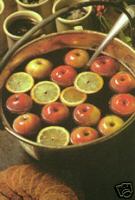Three weeks after general alarm over an unruly mob that threw stones, England officially suspended habeas corpus, the shorthand term for a person's right to appeal imprisonment. The term came from the phrase "habeas corpus ad subjiciendum" (produce or have the person to be subjected to [examination]), used in 14th century documents that ordered state-run prisons to answer to the court system. Habeas corpus describes the principle of even state powers having to justify their actions; you can't just lock a person up and throw away the key. In late February, 1817, the government of England said it would do exactly that for as long as it wanted to.
By May of 1817, William Hone was in prison, following the publication of his parodies ridiculing the Prince Regent (later to be George IV). His parodies, based on well-known Church of England texts, used the format and key words of every-day religious ritual to point out just how irreligious and immoral the Prince Regent was: his lavish lifestyle and indulgences, set against the general populations struggles with high taxes and poverty, for instance.
 |
| The Prince Regent, as illustrated by James Gillray (1792) |
Hone was finally given an opportunity to defend himself in court, in December, although in this case the court hardly acted like a separate branch of government. Hone, representing himself, battled a biased judge and old customs that had effectively made the jury a group of official yes-men. These challenges had to come well before he could answer the actual charges against him. He couldn't hope to win his trials with a jury stacked against him.
Because there were three pamphlets the government objected to, Hone had to defend himself at three separate trials. Hone's presentations, in large part, consisted of a history of parody, including specific examples and their strategies. One major point was that the original work itself is often not the target of the parody; sometimes, the target is a political figure or others who have come to be fair game. Since the line between religion and government was still rather blurred in 19th century England, this was a major distinction. Hone wasn't making fun of the religious texts. He was criticizing the excesses of the Prince who sat upon the throne.
Hone was acquitted by the jury in all three trials.
Sources:
Entry on Hone's Reformists' Register and Weekly Commentary
(http://honearchive.org/bibliographical/annotated.html#mr)
Text of Hone's Reformists' Register [published as "Proceedings against William Hone before his trials. Complete"]
(https://books.google.com/books?id=hNdbAAAAQAAJ)
Entry on William Hone
(https://books.google.com/books?id=qVrUTUelE6YC&pg=PA287)
Introduction to exhibit about William Hone (http://libraries.adelphi.edu/bar/hone/intro.html)
Meaning and translation of "habeas corpus" (http://www.etymonline.com/index.php?term=habeas%20corpus)
Biographical sketch of the Prince Regent (later George IV) (http://www.historyhome.co.uk/people/george4.htm)
James Gillray's illustration of the Prince Regent
(http://www.ncl.ac.uk/library/special-collections/exhibitions/current-and-past-exhibitions/gillray/royalty/digestion)








